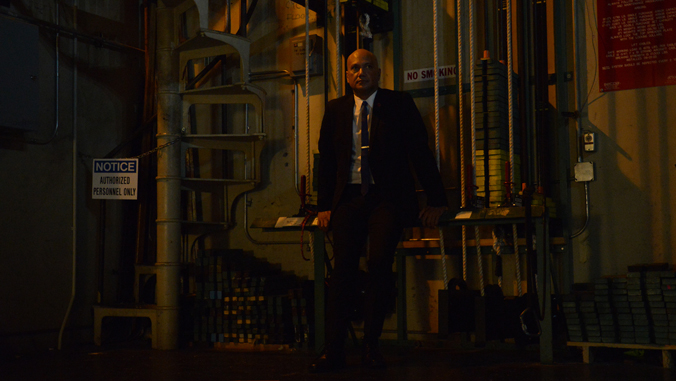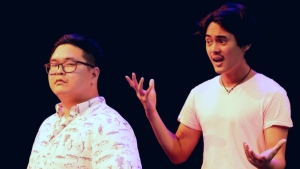
The COVID-19 pandemic created a silver lining for two University of Hawaiʻi theatre productions temporarily halted from in-person performances. The Kennedy Center American College Theater Festival (KCACTF) Region 8 is normally held at different sites on the West Coast, making it difficult and expensive for UH productions to appear. However, this year’s online festival has allowed the productions to perform virtually.
I’m Lot Lane (a solo effort) from UH Mānoa Theatre and Dance and Oriental Faddah and Son from the Windward Community College Theatre Program are among six productions invited to the national showcase, February 10–13. KCACTF Region 8 encompasses college and university theatre productions from Arizona, Central and Southern California, Guam, Hawaiʻi, Southern Nevada and Utah. For more details and to register for the festival, visit the KCACTF Region 8 website.
I’m Lot Lane (a solo effort)
I’m Lot Lane (a solo effort) made its debut on the virtual stage in December 2020. It is inspired by historical accounts of the last remaining royalist insurgent in Hawaiʻi. Lot Lane turned himself into government forces by walking in and announcing “I’m Lot Lane” during the Uprising of 1895. It is a brash production that pushes against the norms of what theatre has been used for in Hawaiʻi. The production has a strong language warning.
“When you take into account that a festival like this, which would normally be very difficult for the University of Hawaiʻi to participate in, the pandemic has just completely leveled the playing field, allowing for us to go up against the big schools from that particular region,” MFA candidate and project creator Keola Simpson said. “I think we’re even better because of our commitment to the online platform.”
Simpson is from Oʻahu, attended college in Los Angeles, and has lived and worked in New York City for the last 10 years. He has attended many festivals, including the KCACTF Region 8, and has seen the quality of UH theatre productions increase over the last few years.
“This is a big opportunity for our department and the university, and hopefully we can go and show the Western U.S. that we know how to do this too,” Simpson said.
Oriental Faddah and Son

The student cast of Oriental Faddah and Son waited for nearly a year before finally being able to showcase its production. Oriental Faddah and Son was scheduled to be performed at Windward CC’s Palikū Theatre in March 2020, but performances were abruptly canceled due to the pandemic.
“These remarkable student actors worked so hard—day and night, for weeks—only to have their show canceled on opening night,” said Taurie Kinoshita, play director and Windward CC instructor. “Getting to finally showcase this is a dream come true.”
The production by Lee A. Tonouchi, also known as “Da Pidgin Guerrilla,” spotlights the relationship between a father and his son as part of a local Hawaiʻi Okinawan family. It is based on Tonouchi’s award-winning poetry book Significant Moments in da Life of Oriental Faddah and Son (Bess Press), and investigates what it means to be Okinawan in Hawaiʻi, illustrating the values of the Uchinānchu (Okinawan immigrants and their descendants in Hawaiʻi).
Kinoshita said many of the talent are first-time or beginning actors, and they were dedicated, hard working and remained committed to excellence—especially in the accuracy they managed in the line division of the original poems—sharing single lines, words or phrases with precision.
Kinoshita also credited the Windward CC technology-media department with effectively transitioning the play to a virtual platform, and Okinawan cultural experts Norman Kaneshiro, Eric Wada and student dramaturg Jeremy Keuma with music, language and cultural advising.
These productions are examples of UH Mānoa’s goal of Excellence in Research: Advancing the Research and Creative Work Enterprise (PDF), one of four goals identified in the 2015–25 Strategic Plan (PDF), updated in December 2020.
By Marc Arakaki

